Purge valve: how it works, symptoms, problems, testing
Updated September 17, 2021
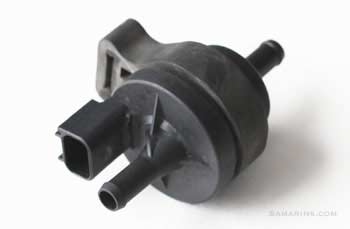 Purge valve (solenoid).
Click for a larger photo
Purge valve (solenoid).
Click for a larger photoThe EVAP system prevents fuel vapors in the fuel tank from escaping into the atmosphere. The EVAP system traps fuel vapors from the fuel tank and temporarily stores them in the charcoal canister, see the diagram.
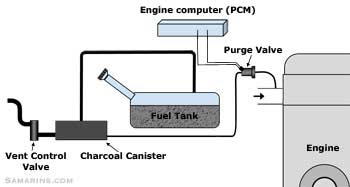 EVAP system diagram
EVAP system diagramIn modern cars, the purge valve is an electrically-operated solenoid, that is controlled by the engine computer. When the engine is off, the purge valve is closed. When the engine is running and fully warmed up, the engine computer pulses the purge valve open allowing some amount of fuel vapors to be purged from the charcoal canister and burned in the engine. When the purge valve operates, it might produce a rhythmic clicking noise under the hood.
Purge valve problems
The most common problem with the purge valve is when it sticks or does not close fully. This may cause the "Check Engine" light to come on. In some cars, a stuck-open purge valve can cause difficulty starting right after refueling at a gas station: for the first few seconds the engine may run rough and stumble.Purge valve problems are common in many cars. In some Hyundai models (Elantra, Santa Fe, Tucson, Tiburon), a stuck-open purge valve is fairly common to cause the "Check Engine" light with the code P0441.
Similar problems are fairly common in many European cars, including Audi and Volkswagen. In some Ford and Mazda vehicles, a faulty purge valve can cause the code P0446 and other EVAP codes.
Advertisement
A leaking purge valve is not uncommon in some GM vehicles. For some cars, the purge valve warranty coverage has been extended. Google: GM purge valve special coverage.
The purge valve is not very expensive ($35-$65 for the part) and is fairly easy to replace. In most cars, it's attached to the engine or the intake manifold. For example, see this photo of a purge valve in the Jeep Grand Cherokee.
How the purge valve (solenoid) is tested
You can find the proper procedure to test the purge valve in the vehicle's service manual. We posted a list of websites that offer paid access to service manuals for different cars at the bottom of this article: Check Engine Light: What to check first, repair options.In most cars, the purge valve is normally closed, meaning it should be closed with no voltage and open when the voltage is applied.
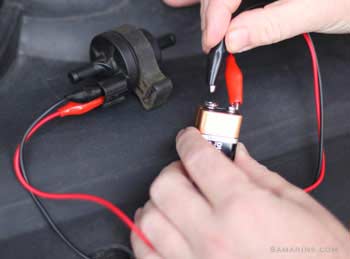 |
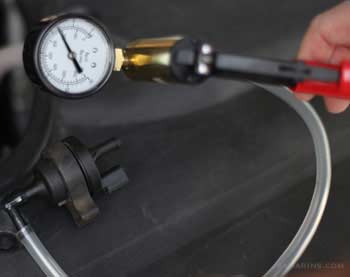 |
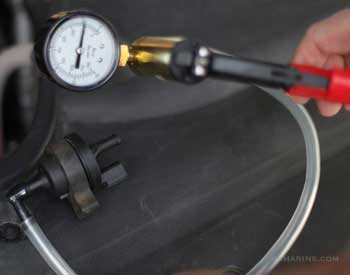 |
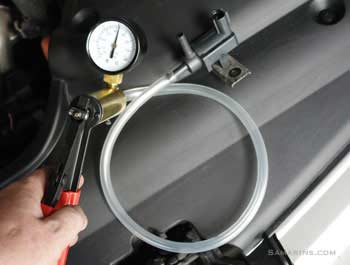 |
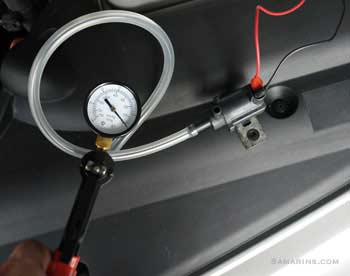 |
Read Next:
Vent valve (solenoid): how it works, symptoms, problems, testing
Check Engine light: what to check, common problems, repair options
OBD Code P0446 Evap System Vent Control Circuit Malfunction
OBD Code P0441 Evaporative Emission Control System Incorrect Purge Flow
Code P0455 Evaporative Emission Control System Leak Detected (gross or large leak)
Air fuel ratio (A/F) sensor
Mass airflow sensor: How it works
Crankshaft position sensor: how it works, problems, testing.
Vent valve (solenoid): how it works, symptoms, problems, testing
Check Engine light: what to check, common problems, repair options
OBD Code P0446 Evap System Vent Control Circuit Malfunction
OBD Code P0441 Evaporative Emission Control System Incorrect Purge Flow
Code P0455 Evaporative Emission Control System Leak Detected (gross or large leak)
Air fuel ratio (A/F) sensor
Mass airflow sensor: How it works
Crankshaft position sensor: how it works, problems, testing.